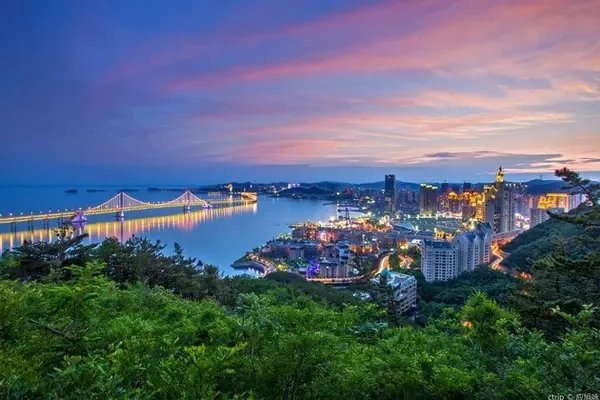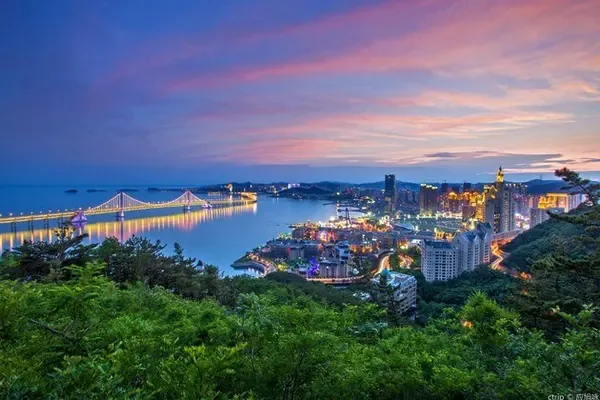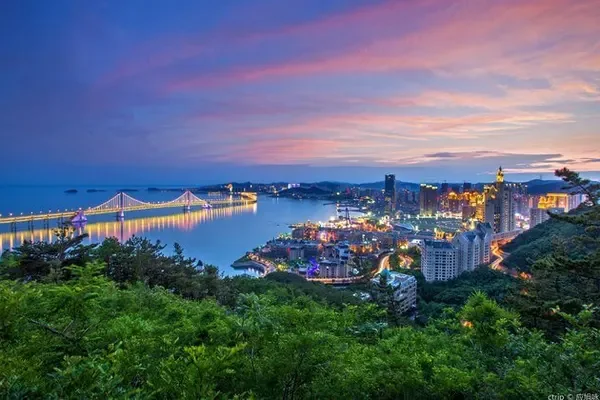The ancient city of Beijing has a long history and splendid culture. It is the city with the largest number of world cultural heritages in the world. Fangshan in the suburb of Beijing is the back garden of the ancient capital. There are 13 large and small rivers, the Juma River and the Dashi River meander, the Yongding River and the Xiaoqing River pass through the area, and Shangfang Mountain is full of greenery in summer. The Beijing Ape-Man Site and the Liuli River Site are worth exploring and thinking about. Fangshan is the capital of Beijing. In summer, you come to Fangshan to escape the summer heat, live in seclusion among the mountains and rivers, and slowly taste the unique cultural heritage of Fangshan.

1 Western Zhou Yandu Ruins Museum



If you want to understand the cultural heritage and folk customs of a place, then start from the museum. If I ask you where did the ancient city of Beijing originate? Many people probably don't know how to answer. With this question, they walked into the Western Zhou Yandu Site Museum, and let time slowly open the door to the history of 3,000 years. The discovery of the Liulihe site traced the history of Beijing's city construction back to the eighth year of King Zhou Zhao. Bronze wares with inscriptions on Marquis Yan, mysterious and ancient noble tombs, Beijing starts here.

It is a very solemn thing to trace the ancient history along the veins of history. The Western Zhou Dynasty Yandu Ruins Museum is located in Dongjialin Village, Liulihe Town, Fangshan District. Through the image of the bronze ancient Yan people on display, we can see that in the In the ancient Western Zhou Dynasty, the manufacture of bronze wares was already well developed. Also unearthed here are the largest bronze wares in the history of Beijing, the Jin Ding and the Juge, with an inscription of 43 characters, which records the historical facts of Kelei (Lei is a homonym) and Kehe (Hewei) who recorded the historical facts of Yan Magong's eldest son Ke being granted the title of Marquis of Yan. Homophones) and other national cultural relics.


The Yandu Ruins Museum of the Western Zhou Dynasty was built in the burial area of the Shang and Zhou ruins. There are exhibition halls, cultural relics warehouses, two tombs, and two pits for chariots and horses in the museum. The cultural relics on display include thousands of pottery, copper, primitive celadon, jade, lacquer, figurines, stone and other utensils. The simple shape exudes the luster of the ancient years. Although it is not exquisite, it has a simple beauty.


In the museum, you can visit the tombs of the Western Zhou Dynasty at close range. Here, the status of human beings in the Western Zhou Dynasty is truly reproduced. Depending on the status of the owner of the tomb, the number of chariots and horses buried with him varies. It has gone through 3000 years. The bones in the tomb have been petrified and still maintain the stretch of life. It can be seen that the ancients were also very tall. The cemetery of Yan State in the Western Zhou Dynasty of Liulihe is an important part of the Shang and Zhou ruins in Liulihe. The cemetery is located in Huangtupo Village in the southeast of the city site. More than 300 tombs from the Western Zhou Dynasty have been excavated.
Travel tips: The Yandu Ruins Museum of the Western Zhou Dynasty is free to visit. The opening hours are from Tuesday to Sunday from 9:00 to 16:00, and the admission is closed at 15:45. The museum is closed on Mondays during non-holidays. Please remember to open the museum Time, so as not to regret that the museum is closed and cannot enter.
2 Tiankai Temple and Tiankai Pagoda

Fangshan has a Hancunhe Town Longmen Ecological Park, which shows the development process of Fangshan’s countryside. Those old objects in the old days bring people back to the past memories. In addition to the good natural ecology, the most famous place here is Tiankai Temple and Tiankai Pagoda.


Walking into Tiankai Temple in the ancient rhyme, the warm light shines on the ancient red wall and black tiles, which has a solemn and solemn beauty. Tiankai Temple is one of the oldest ancient temples in Beijing. It was built in the Eastern Han Dynasty. With a history of more than 1950 years, the temple is small, the birds are chirping, the pines and cypresses are evergreen, and the ancient flavor is full.



Looking for Fangshan in the suburbs of Beijing in summer, I heard distant bells and Buddhist chants as soon as I walked into Tiankai Temple. It turned out that it happened to be a grand ceremony held here. The heart is pure.

Tiankai Temple was first built in the Eastern Han Dynasty. According to the inscriptions of the Yuan Dynasty and the "Shangfangshan Zhi" of Qianlong's edition, Huayan Huisheng, an Indian Buddhist monk, came to Dongtu in the tenth year of Jianwu Emperor Guangwu of the Eastern Han Dynasty (AD 34). In the 26th year of Jianwu (AD 50), he came here and established Tiankai Temple to spread Buddhism. It has been nearly 2,000 years, and Tiankai Temple is still full of incense, and there have been public reading activities here.


Not far from Tiankai Temple, there is a Tiankai Pagoda. The tower is not very high, about 15 meters. If you look closely at the carvings on it, you can see that it is very simple. Tiankai Temple is also the holy place where the relics of Sakyamuni Buddha were unearthed. . (According to historical records, there are 15 Buddhist relics in the tower of Tiankai Temple). Therefore, Tiankai Temple has become a world-famous Buddhist holy place, and it is also one of the only two loft-style pagodas in Fangshan ancient pagodas.
Travel Tips:
Monday to Sunday 9:00-22:00
3 Shangfangshan


When you come to Fangshan to escape the summer heat, Shangfangshan is a must. The vegetation coverage here is particularly high. Climbing along the stone steps, the scenery along the way is beautiful. , here is not only green trees, but also has a long history of Buddhist culture, as early as 1400 years ago in the Eastern Wei Dynasty, there were eminent monks from Shangfang Mountain who came here to build temples.



Sitting on the cable car and slowly going up among the green mountains and green trees, the route of the cable car is very steep, and the scenery outside looks very steep. I did not expect such a secluded place in the suburbs of Beijing. Fangshan is the only preserved place in North China. The intact primary secondary forest and the 2000-year history of Buddhist culture endow this green mountain with a different charm. It is a comprehensive national forest park integrating nature, Buddhism and karst caves.

Speaking of Tushita Temple, not many people may know it. There are five temples here. During the period when the incense was flourishing, there were as many as 500 monks. The environment is quiet. The two green plants in front of the main hall are said to be more than 500 years old. The entire ancient temple has a long history. Emperor Ming Zuzhang bestowed power on Anbian and said: "See Buddha in the sky". If you live on the mountain, you can see the sunrise at the top, and the visual effect will be even more shocking. Many people climb the mountain and come to Tushita Temple for another purpose, which is to take a look at the forty-two chapters of Buddhist scriptures on the back eaves of the temple. The Buddhist scriptures are engraved on fifteen stone slabs. Man, it should be a surprise.

If I hadn’t come to Fangshan Shangshan, I would have never known that there is such a magical cave in the suburbs of Beijing. Fangshan is known as the “Kingdom of Caves” by the geology circle, and it has the largest karst cave group in northern China. After entering the cave, you need to walk up the steps, and then you will suddenly see it. The naturally formed cave hides the secrets of the earth. The Yunshui Cave is 630 meters deep and is divided into 6 halls. It is a historical cave. There are more than 120 scenes in the cave. I entered the cave with strong curiosity to explore. I don’t know what is the difference between the caves in the north and those in the south?



The stalactite wonders in the cave, the shocking visual impact is amazing, what is it like to have a dialogue with ancient time? What was presented to me was the secret of nature. The whole cave has natural independent landscapes such as plants, animals, and landforms, just like a huge "stone scene museum". The particularly peculiar Tongtianzhu in the second hall is 38 meters high and is the highest in Asia. It is magnificent and breathtaking.
8:00-16:00
4 Hanchon River

When it comes to Hancun River, many people may not have heard of it, but when it comes to Hanjian Group, most people know that the China Film Museum, Xinlan Building, and Jinlun Building are all owned by Hanjian Group, and Hanjian Group was originally It started from a contracting team of more than a dozen people in Hancunhe. When you walk into the village, you can see green trees and houses. Hancunhe is one of the top ten famous villages in China and a national ecological cultural village. It is also a famous building in the suburbs of Beijing. Town of.

Hancunhe Town is located in the southwest of Fangshan District, about 50 kilometers away from downtown Beijing. The Gushankou Railway Station in the town is connected to the Beijing-Yuan Railway, and the traffic is very developed. The four main roads of Jingzhang, Yueli, Fangzheng and Yuesheng criss-cross with the main roads in the countryside, and the 917 bus goes directly to Beijing. Hancunhe used to be a poor and backward small village. What caused the earth-shaking changes here? Economic development and agricultural investment have made this poor village and town prosperous today.


The uniformly planned streets and houses of Hancun River make it look tidy and warm. Walking through the streets, you feel as if you are in a small town in Europe. The houses on both sides of the street are all small buildings that look like villas, with bright and harmonious red roofs and white walls, and spacious viewing balconies, which make people feel comfortable just looking at them.

Hancunhe Town has a total of 3 middle schools and 12 complete primary schools. The village is bordered by green trees, and the green hills are oblique to the outside. Living in a village full of greenery, the sense of happiness must be very high. Every family lives in a villa and everyone lives and works in peace. Harmonious new rural life has been realized here in Hancunhe.
Seclusion in the Holy Water Lotus Garden

Living in seclusion in the mountains is the dream of many people. In the early morning, watching the morning mist slowly diffuse between the green hills on the terrace, the breeze blows the wild Chinese toon trees, and the faint fragrance of plants floats in. Isn’t this a wonderful feeling? ? This is the holy water lotus garden in Fangshan, living in the mountains, time is slow and beautiful.



How should I describe the encounter with the Holy Water Lotus Garden? When climbing along the winding mountain trails, when our car was parked in front of the tree-lined courtyard, the simple and simple Chinese style contrasted with the green mountains and green waters in the mountains. Chengmei, the simple tables and chairs all exude the most authentic fireworks of life, but they are as elegant as a guqin. This is probably the appearance of living in a mountain forest in my heart. It is deeply Zen, pleasing to the eye, comfortable and easy.


Every room in the Sacred Heart Lotus Court has large windows facing the green trees and green hills. There are spacious tatami mats. It should be a joy in life for two or two friends to sit on the floor, play gentle and quiet ancient music, and drink green tea.


B&Bs are different from our traditional hotels. The decoration of every small item in the room reveals the taste of the owner of the B&B. The room in the Sacred Heart Lotus Court looks very simple. The tea set in the room is simple and ancient, super large Sitting in the bathtub, you can see the green trees dancing outside the window. In such an environment, you can really relax yourself and enjoy the relaxation and comfort of mountain life.



This is the mountain life I like. In the depths of the mountain above Fangshan, Beijing, I sit around with friends I haven’t seen for a long time. I treat the seasonal side dishes with my heart, and the food I make has the authentic taste of the food. Tofu, Mei Fei drunk, and spinach noodles is my favorite. Every dish is both delicate and simple.
Travel Tips:
1 Fangshan is rich in tourism resources. There are 13 large and small rivers in the territory. There are 559 cultural relics in the whole area, including the Peking Man Site, the Yandu Site of the Western Zhou Dynasty, Yunju Temple, Shihua Cave, Forest Park, and Shangfang Mountain.
2 Transportation from downtown Beijing to Fangshan: Subway Line 2 → Line 67 → Line 616, the whole journey is about 35.1 kilometers, or transfer to Fangshan Line at the end of Metro Line 9, Fangshan is especially suitable for self-driving travel.
3 Fangshan belongs to the temperate continental climate, with an annual average temperature of 11.9°C and different scenery throughout the year.



